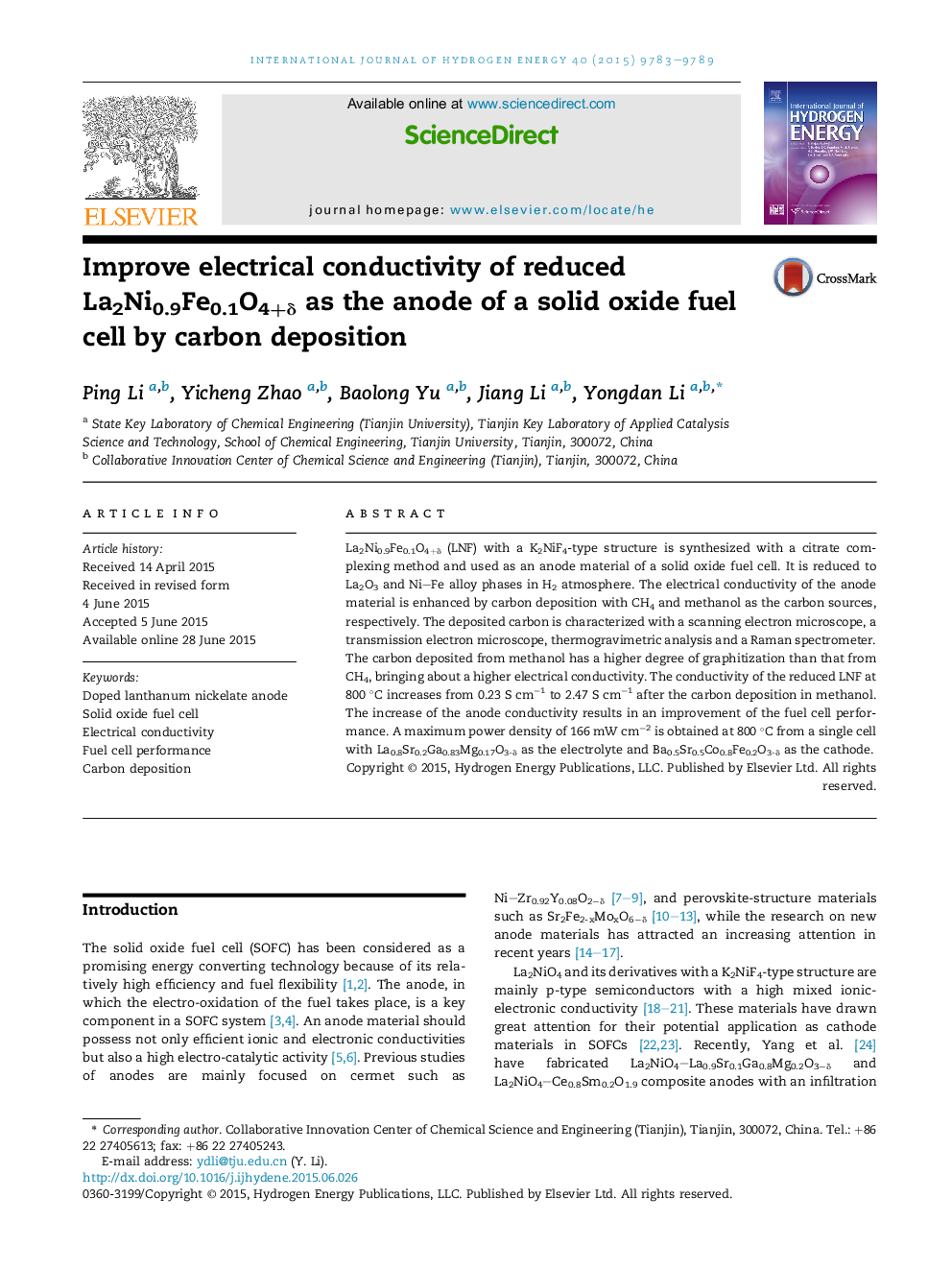| Article ID | Journal | Published Year | Pages | File Type |
|---|---|---|---|---|
| 1274871 | International Journal of Hydrogen Energy | 2015 | 7 Pages |
•La2Ni0.9Fe0.1O4 is investigated as an anode material of a solid oxide fuel cell.•The electrical conductivity of the anode is improved by carbon deposition.•The effects of the carbon source on the conductivity of the anode are studied.•The single cell exhibits a maximum power density of 166 mW cm−2 at 800 °C.
La2Ni0.9Fe0.1O4+δ (LNF) with a K2NiF4-type structure is synthesized with a citrate complexing method and used as an anode material of a solid oxide fuel cell. It is reduced to La2O3 and Ni–Fe alloy phases in H2 atmosphere. The electrical conductivity of the anode material is enhanced by carbon deposition with CH4 and methanol as the carbon sources, respectively. The deposited carbon is characterized with a scanning electron microscope, a transmission electron microscope, thermogravimetric analysis and a Raman spectrometer. The carbon deposited from methanol has a higher degree of graphitization than that from CH4, bringing about a higher electrical conductivity. The conductivity of the reduced LNF at 800 °C increases from 0.23 S cm−1 to 2.47 S cm−1 after the carbon deposition in methanol. The increase of the anode conductivity results in an improvement of the fuel cell performance. A maximum power density of 166 mW cm−2 is obtained at 800 °C from a single cell with La0.8Sr0.2Ga0.83Mg0.17O3-δ as the electrolyte and Ba0.5Sr0.5Co0.8Fe0.2O3-δ as the cathode.
Graphical abstractFigure optionsDownload full-size imageDownload as PowerPoint slide
